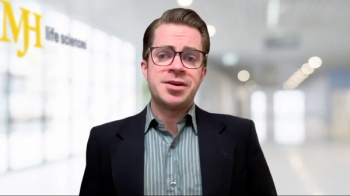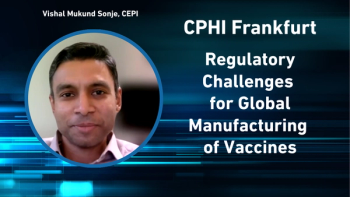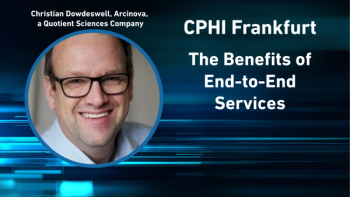
- Pharmaceutical Technology-03-02-2015
- Volume 39
- Issue 3
Europe Strives for a More Efficient Generic-Drug Approval Framework
Proposals to make the decentralized procedure more efficient were discussed at the January 2015 EGA conference.
The European Union’s decentralized procedure (DCP) for drug approval is regarded outside Europe as an effective system for cross-border collaboration in the authorization of medicines, such that it is being used as a model for a number of new global initiatives in the harmonization of pharmaceutical regulatory standards. Yet within the EU, both industry and regulators now acknowledge that deficiencies with the procedure need to be tackled before they start to undermine its benefits.
“The DCP has been a very successful procedure,” Stella Koukaki, managing partner and scientific affairs director at PharOS Ltd., a Greek-based developer of generic medicines, told the annual regulatory and scientific affairs conference of the European Generic Medicines Association (EGA) in London in January 2015 (1). “But it is time to take the DCP to the next stage [of its evolution] so that it is able to face a very challenging environment,” she added.
Room for improvement
The EGA used the meeting as a platform to reveal publicly, for the first time, a series of its own proposals for making the procedure more efficient. Generic and hybrid medicines now account for more than 90% of the activities of the DCP, which is currently used by the 28 member states of the EU and three non-EU European countries--Norway, Iceland, Liechtenstein. A key objective of the EGA is to make the handling of information on the manufacturing processes for generic drugs quicker and less cumbersome. Some of the regulators from the 60 national and regional medicines authorities from 27 countries attending the conference also outlined their suggestions for improving the DCP, although their ideas were not so radical as the EGA’s.
“It’s time to ask ourselves whether we are efficient enough,” said Xavier De Cuyper, chief executive of the Belgian Federal Agency for Medicines and Health Products (FAMHP), speaking on behalf of the management board of the Heads of Medicines Agencies (HMA) in Europe. “We can do better, especially in the way we interact with other medicines agencies both inside and outside Europe,” he said.
De Cuyper was referring in particular to the operations of the European Medicines Regulatory Network (EMRN), which includes 44 national competent authorities in medicines control in the 31 countries involved in the DCP. It also embraces the EU’s centralized procedure (CP) for pharmaceuticals approval run by the European Medicines Agency (EMA). “I am convinced that if we continually set higher standards, we can improve how our network currently operates,” De Cuyper continued.
The DCP was introduced 10 years ago to streamline a system of multistate mutual recognition under which an authorization of a medicine in one state could be automatically accepted by other EU states. It was drawn up to help companies wanting to market the same drug in only a limited number of states rather than in all EU countries for which the centralized procedure had been devised.
Under the decentralized procedure, a marketing application for an individual medicine is assessed by a reference member state (RMS). This evaluation is submitted to the other countries, called concerned member states (CMSs), where the applicant wants to market its drug. Disagreements about the RMS evaluation among CMSs are normally resolved by the Co-ordination Group for Mutual Recognition and Decentralized Procedures-human (CMDh) that is responsible for the smooth running of the DCP.
Speeding up generic-drug approvals
The DCP is seen to have been operating so well that it is influencing the ways new international initiatives, such as the International Coalition of Medicines Regulatory Authorities (ICMRA) and the International Generic Drug Regulators Pilot (IGDRP), are being organized. With the IGDRP, which aims to provide a foundation for faster authorization across the world on safe, effective, and high-quality generic-drug products, a pilot information sharing system is based on that used in the DCP. As part of the pilot, details of assessments of products carried out by RMS countries are, with the agreement of the companies applying for authorization, being sent to the states participating in the IGDRP.
The pilot, which was due to be completed in 2014, is likely to be extended for another two years to 2016 with the assessment of generic medicines under the EU’s centralized procedure also being included in the information sharing component of the project. EMA agreed in January 2015 to share its CP assessments in real time with regulatory agencies in the IGDRP.
“We should be proud of what we are doing in Europe in the regulation of medicines,” commented Peter Bachmann, CMDh chair and head of the European and international affairs co-ordination group of the German Federal Institute for Drugs and Medical Devices (BfArM) at the EGA conference (2). “One of Europe’s strengths is the existence of a (cross-border) legal framework. Also, after years of experience, we trust each other.”
“People inside Europe are thinking the CP and DCP are still not working as well as they should be,” Bachmann added. “It is always more difficult [to appreciate how well they’re working] when you are inside the box.”
Prerequisites for a successful authorization procedure
In the eyes of the EGA, the shortcomings of the DCP now need urgent attention to ensure that it operates efficiently and reliably for generic-medicine producers. From the industry’s viewpoint, there were two important prerequisites for a successful authorization procedure.
“One absolute need is flexibility and we need a lot of it,” said Caroline Kleinjan, chair of the EGA’s regulatory and scientific committee and head of the European regulatory competence centre of Sandoz, part of Novartis (3). “Our association has many different types of companies with difference needs--small and big ones and companies developing medicines for licensing.”
“Another big need is speed,” Kleinjan continued. “Timelines need to be as short as possible and as transparent and predictable as possible.” Among the flaws pinpointed by the EGA in the current DCP are delays in the granting of marketing authorizations (MA) and approvals of process and other post-authorization variations. Some applications for marketing authorizations can take more than three years to be accepted so that the MA is often too late to be used, according to the association. These lengthy hold-ups are frequently caused by duplication of examinations of dossiers and CMS prevarications when evaluating RMS assessments.
Four types of DCP
The EGA has suggested the creation of four DCP types that will help to deal with the present needs of generic medicine producers. They would assist companies wanting to take quick advantages of new manufacturing processes and to respond rapidly to changes in market conditions within groups of countries, according to Kleinjan.
A major change should be the introduction of what the EGA called a “backbone” decentralized procedure, with similar characteristics to the CP, with one application undergoing a core assessment and approval by a rapporteur and co-rapporteur, with the approval being confirmed by the CMDh. The holder of this marketing authorization would be able to choose in which state it wanted further approvals “in any number and at any point of time within five years,” Kleinjan told the meeting.
A “basket” DCP, another EGA proposal, would also comprise one application containing all potential strengths, supply arrangements, and pack sizes. “The MAH would be able to choose the desired elements in each of the involved member states,” Kleinjan said.
Another suggested change would be the introduction of a “mini” DCP that would be applied to a minority of states when the majority of countries have approved a product. It would provide “almost immediate access” to these other states.
Finally, the EGA has put forward the idea of a DCP under which several applications for a medicine could be assessed under a work-sharing arrangement by different RMSs to make better use of assessment resources in agencies.
“What we want to do with these proposals is start a dialogue with regulators,” Kleinjan later told
Pharmaceutical Technology. “The response at the meeting from regulators was very promising--much more so than we expected. One national agency has said it will hold a special meeting to discuss them while another has already come up with its own alternative proposals.”
In addition, the association is pressing for a simplification of data requirements in application dossiers, such as, for example, details of GMP certification being dealt with separately. The mandatory inclusion of some GMP information in dossiers is seen as being a barrier to the fast approval of post-authorization variations.
Reorganization of the DCP, however, will not be easy. Even if eventually the regulators and industry reach agreement on a modified, more efficiency procedure, it is likely to require amendments to existing EU legislation that will have to be approved by the European Parliament and EU governments. It could, therefore, be a lengthy process.
References
1. S. Koukaki, “10 years’ Experience with the DCP--Does DCP Need Refreshing,” presentation at the 14th EGA Regulatory and Scientific Affairs Conference (London, 2015).
2. P.Bachmann, “Opportunities and Challenges of Globalization,”presentation at the 14th EGA Regulatory and Scientific Affairs Conference (London, 2015).
3. C.Kleinjan, “’Dream DCP’--The EGA’s Proposal for Improvements,” presentation at the 14th EGA Regulatory and Scientific Affairs Conference (London, 2015).
Articles in this issue
over 10 years ago
Vaccine Development and Production Challenges Manufacturersover 10 years ago
Kason Offers Screen Replacementover 10 years ago
GEA Homogenizer Offers Scalabilityover 10 years ago
PolyScience Chiller and Circulator Enhances Temperature Controlover 10 years ago
Ross Control System Increases Consistencyover 10 years ago
Industry Expert Q&A with Richard Grantover 10 years ago
Managing Supplier Data Collectionover 10 years ago
The Global Biomanufacturing Outsourcing Marketover 10 years ago
Lyophilization Cycle Optimization of Cell-Derived Productsover 10 years ago
Minimizing Risk during HPAPI ManufactureNewsletter
Get the essential updates shaping the future of pharma manufacturing and compliance—subscribe today to Pharmaceutical Technology and never miss a breakthrough.





